Is that in-game footage in that video?
I feel sick and depressed.
I feel sick and depressed.
After Broken Sword 5, too many.How many virgins I have to sacrifice to make sure this will turn out good?
Just yourself would be enough if it were not too late alreadyHow many virgins I have to sacrifice to make sure this will turn out good?
































































Beyond a Steel Sky Is a Return to Cyberpunk Dystopia 25 Years in the Making
Throw some wurst on the burning wreck of utopia.
The barren, terrifying wastes of devastated Australia are the home for one of the most notable nostalgia-powered trips of recent history: 2015’s Mad Mad: Fury Road. Picking up the legacy of a series thought finished decades ago, original director George Miller blended old-school physical filmmaking with modern techniques to create one of the decade’s most memorable blockbusters.
But Mad Max isn’t the only Australian dystopia that lay dormant for years in wait of revival. Beneath a Steel Sky, released in 1994, is a cult favourite adventure game. Fans have hoped and dreamed of a second game for over two decades. And now, in 2019, the original developers have created a sequel - Beyond a Steel Sky - by combining old-school adventure game design with modern techniques.
Beyond a Steel Sky doesn’t (at least as far as the hands-off demo I’ve witnessed) feature a flamethrower guitar. But - like Fury Road - it’s an ambitious sequel purposefully designed to both satisfy the original’s most devout fans while also acting as an ideal first step for those who may not even have heard of Beneath a Steel Sky.
“It is unashamedly an adventure game” Charles Cecil, CEO of Revolution and creator of both Beneath and Beyond a Steel Sky, reassures me. That means fans of the original are well catered for; you once again play Robert Foster, explore the cyberpunk metropolis of Union City, and there are even verb puzzles. But the way players interact with the world, while rooted in the classic adventure games of the 1990s, has far more modern influences.
This begins with the idea of ‘Virtual Theatre’, a concept actually first used in Revolution’s debut game, Lure of the Temptress, but arguably better suited to a modern 3D games engine that can convey a sense of reality. “Virtual Theater is the idea that characters walk around the world, they talk to each other, they have their own motivations, and that you can subvert the world,” explains Cecil.
“That may sound like a rather basic premise for gaming at large, but it’s a notable step forward for classic adventure games, where characters are typically rooted to the spot and exist purely for the player to talk to. The ambitions of Virtual Theatre also go against the grain of the modern adventure game. Where companies like Telltale evolved point-and-clicks into interactive movies, Revolution is adding simulation rather than scripting to the world of Beneath a Steel Sky. The result is a less predictable world, and one that opens up multiple solutions to puzzles.
It’s almost as if Revolution have added a little dash of the immersive sim to adventure gaming, something that’s made far more apparent in one of Beyond a Steel Sky’s core puzzle mechanics: hacking. Utopia City is littered with access ports to the governing LINC artificial intelligence system, and Foster can break into these and rearrange the code. Just outside of Union City there’s one very simple example in a drinks vending machine. Citizens who approach with the correct ID are served a drink, while those lacking permissions are declined. The machine also has an anti-tamper sensor that sounds an alarm and requests security backup. The LINC hacking interface allows to you switch these outcomes, so the machine can be set to dispense drinks when tampered with, or call security when an authorised customer requests a drink.
As Foster further explores Union City, the hacking systems become more complex. “We can complicate it through what we call ‘nuggets’, which allow you to change the verbs,” explains Cecil. “Then we tie them into the behavior of characters and objects. And we build and layer up puzzles, based on these two premises of Virtual Theater and the LINC hacking.”
Virtual Theatre and hacking are complementary to, rather than replacements for, traditional adventure gaming mechanics. You’ll still be stuffing your inventory full of items and navigating deep dialogue trees. Story is still front and centre, and still created in partnership between Cecil and Dave Gibbons; the co-creator of both Watchmen and the original Beneath a Steel Sky.
““When we put together the Revolution 25th Anniversary collection a few years ago, we got back in touch with Dave and it turned out that he had vast quantities of original artwork,” said Cecil. “There were elements [of a new story]. Even within a couple of years of writing the original, there was storyboards or ideas. So I guess this has been 20 years in the making, because we've been talking about it on and off since then. It's just great that we can finally go ahead with it.”
That story finally begins in an animated comic book that effectively acts as the game’s introductory cutscene. The comic explains how the abduction of a child has forced Foster to journey from the Gap (Australia’s desolate outback regions) and return to Union City, the cyberpunk monstrosity he left behind at the end of the original game. Transformed into a utopia by Foster’s old robot friend Joey, the city’s artificial intelligence has strived to make life better for everyone who resides there. The kidnapped child, however, is the first sign that things may not be as bright as they may seem, and Foster’s return to Union City will gradually reveal the problems beneath the surface.
In adventure game tradition, though, those problems start small: in the game’s opening location on the outskirts of Union City, a trucker has found himself stranded due to depleting his battery thanks to overzealous use of his van’s air-conditioning. Across the road, a child wearing a colander on his head has lost his best friend. And, true to Revolution’s lineage, a group of very angry animals (parrots replacing a goat this time) prevent Foster from breaking into a supply of sausages. While not clear to begin with, all of these problems combine to help Foster break into Union City and learn more about what may have happened to the kidnapped child.
While these puzzles sound extremely traditional. Revolution hasn’t shied completely away from the popular developments in modern day adventure gaming. The last decade of the genre has been defined by moral questions, and Beyond a Steel Sky isn’t passing up the opportunity to include big decisions. “We do have major choices,” says Cecil. “But rather than what a lot of adventure games have, which is that you have a choice and then very quickly you come back [to see the repercussions], we have some key characters and the way that you respond to them will have a profound effect in the way that the ending unfolds.” As such, your decisions will have much more of a slow burn impact, rather than causing the narrative to branch at every conversation. It’s also important to note that Beyond a Steel Sky has one ending, with your choices adding “flavour” to the conclusion, rather than defining it.
Perhaps the most interesting thing about Mad Max: Fury Road is how it simultaneously feels both exactly like an 80s Mad Max movie and something new entirely. Those spiky cars, hideous war boys, and erupting dust plumes are recognisably of that universe, but the thrill of that movie-long pursuit was unlike anything the series had previously achieved. Beyond a Steel Sky looks to be doing something similar; the pace and interactions are pure 1990s nostalgia, yet the Virtual Theatre-powered puzzle design and comic book-styled 3D world are beyond anything seen in Beneath a Steel Sky. 25 years beyond it, in fact.
And that's a good thing, I'd say.They get into explaining the "Virtual Theater" mechanic which basically seems like an attempt at making more dynamic, A.I driven puzzles. To be honest though I read through the preview and watched the video but still don't quite understand how it's supposed to work. The puzzles they show off don't look all that different from normal adventure game stuff.

I mean, this is what we largely did in Primordia (though we had multiple endings), and it seems to me a little bit of misdirection. Having consequences occur at the ending is a way of eliminating any gameplay changes resulting from your choices -- it is a pure negative in my opinion. It's a necessity, sometimes, to control development chaos, but the way they frame it here makes it sound like a more sophisticated way of handling C&C, rather than a hack for making it purely cosmetic (an example of this in Primordia is that the way you deal with Gimbal at the Courthouse has no effect at all on anything except whether Gimbal appears in the crowd of robots at the UNNIIC in the "fix the UNNIIC" endings).“We do have major choices,” says Cecil. “But rather than what a lot of adventure games have, which is that you have a choice and then very quickly you come back [to see the repercussions], we have some key characters and the way that you respond to them will have a profound effect in the way that the ending unfolds.” As such, your decisions will have much more of a slow burn impact, rather than causing the narrative to branch at every conversation. It’s also important to note that Beyond a Steel Sky has one ending, with your choices adding “flavour” to the conclusion, rather than defining it.
And that's a good thing, I'd say.
Besides, the "virtual theater" thing featured in BaSS already, they've been using this approach since Lure of the Temptress.

In at least one instance that I seem to recall (stealing something from a fat guy?), you needed to time your actions based on their schedules. I believe they may also have reacted to things going on in the background. That said, I'd put its implementation as thinner than, say, the airplane puzzle in Zack McKracken (a great puzzle, to be sure).From what I remember in BaSS it was basically just that some characters walked around Union City dynamically but it didn't have an effect on the puzzles.







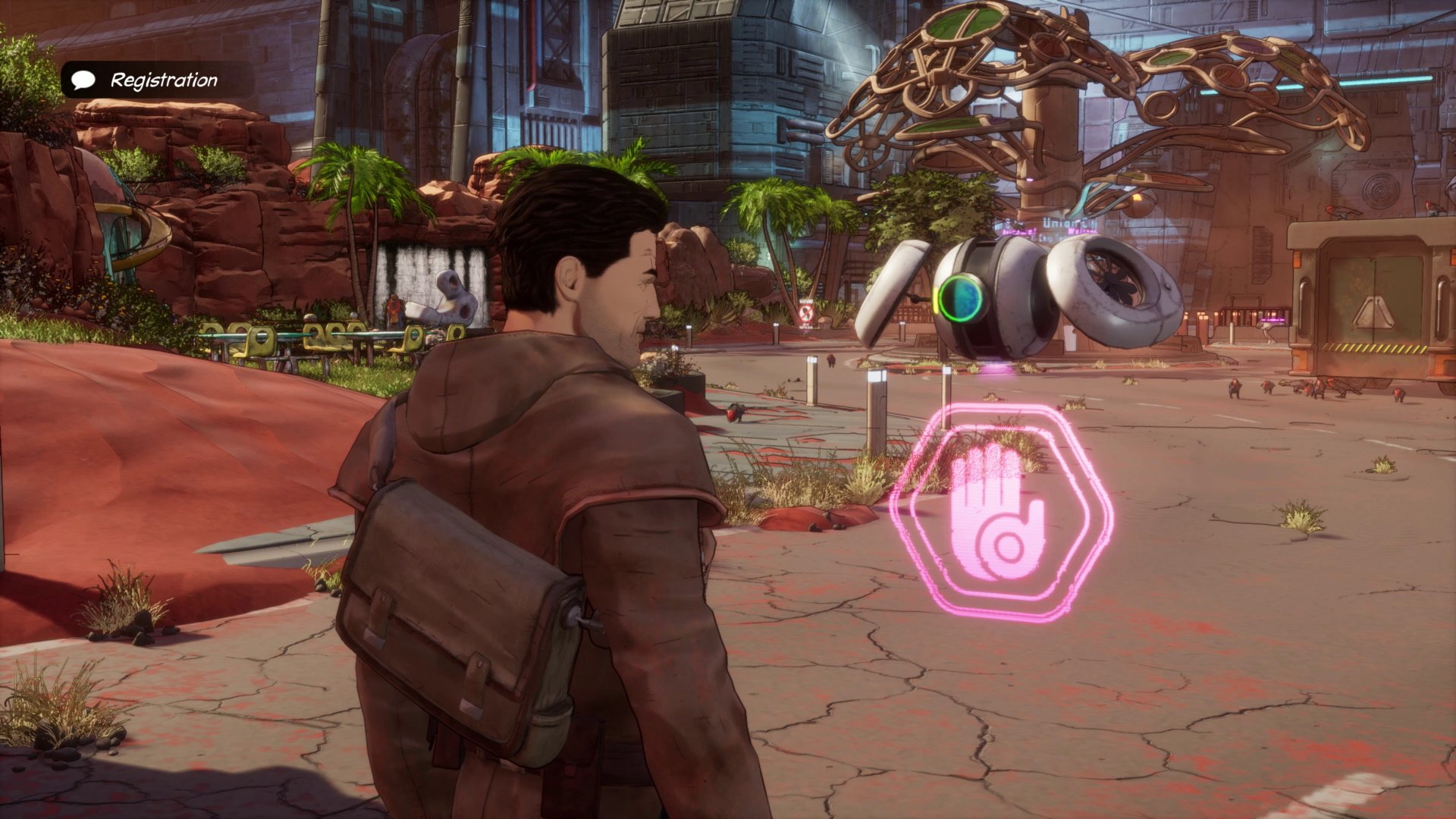
![The Year of Incline [2014] Codex 2014](/forums/smiles/campaign_tags/campaign_incline2014.png)
From Charles Cecil, creator of the Broken Sword series, with art direction by Dave Gibbons, legendary comic book artist behind ‘Watchmen’, comes ‘Beyond A Steel Sky’, the long awaited sequel to the cult classic ‘Beneath a Steel Sky’.
You are Robert Foster. A child has been abducted in a brutal attack. You have vowed to bring him home. But the trail has led you from your community of desert wasteland dwellers, to Union City, one of the last remaining mega-cities in a world ravaged by shattering wars, and political meltdown.
Fortified and impenetrable, it is a utopia in which people live happily under the surveillance and control of a benign AI. But all is far from what it seems...
‘Beyond a Steel Sky’ is a dramatic, humorous, cyberpunk thriller in which engaging puzzles drive a fast-paced narrative set in a dynamic gameworld that responds to – and is subverted by – the player’s actions.
Features:
The World
An adventure set within a dynamic world, populated by willful characters driven by motivations that the player can subvert. In combination with a unique hacking tool, multiple solutions to puzzles emerge from player choices.
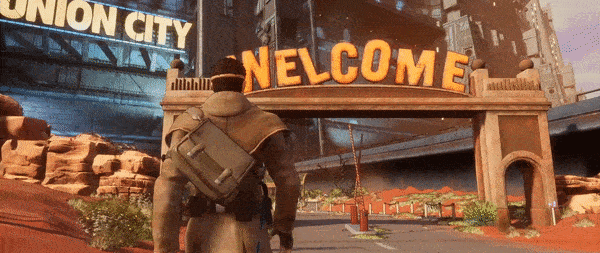
The Story
Unravel dark conspiracies, defeat a terrifying antagonist in this dramatic, humorous, cyberpunk thriller, which explores contemporary themes: social control, AI, and total surveillance.
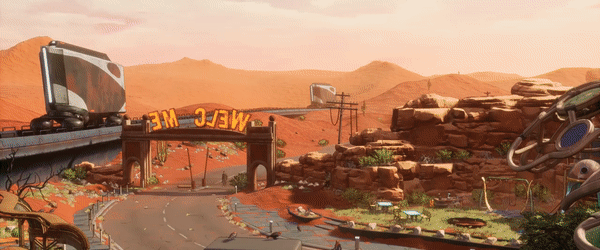
The puzzles
Intelligent puzzles are interwoven with an intriguing dramatic narrative to deliver a compelling gameplay experience.
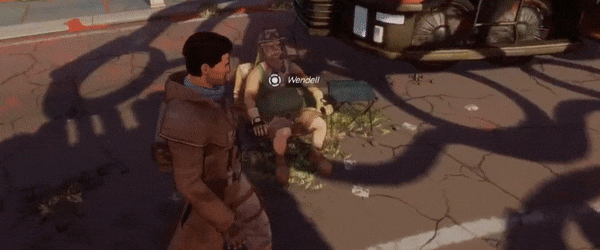
The Look
A beautifully detailed, comic-book styled world, from the mind of legendary comic artist Dave Gibbons.
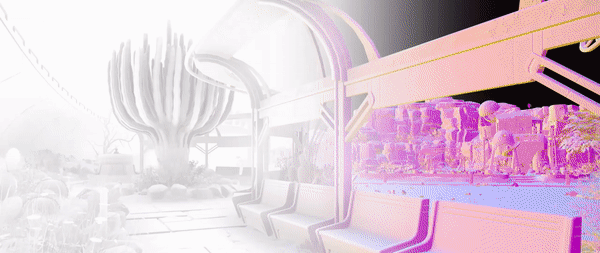















15:00-15:40
Redefining the rules of adventure writing: How Beyond a Steel Sky is breaking new ground
Revolution Software founder and industry legend Charles Cecil will take to the stage to cast light on the 40 years of experience he has amassed writing adventure games, all culminating in the forthcoming launch of Beyond a Steel Sky. Charles will detail the many creative and technical challenges that are part and parcel of writing an adventure set in a unique world, populated by wilful characters driven by advanced AI that's designed to respond to – and be subverted by – the player’s actions.




















































